Sites
ZAKOPANE
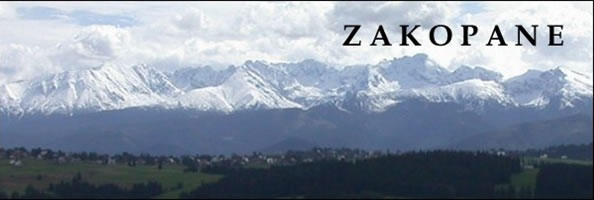
Mountain resort located only 100 km from Krakow in the Tatra Mountains. Zakopane became most wanted place to be visited both by foreign and Polish tourists. Indeed, the hills of Podhale, as well as the town itself, are ideal places for rest, walks or hikes. Enjoying the fresh air, being surrounded by artistic wooden architecture, breathtaking views, you can savor high mountains and unique atmosphere in highlander style. It is all especially beautiful, when visited in spring or autumn, when you may admire all vivid colors of nature in a quieter ambience of the Tatra National Park.
Moreover, you can visit one of Tatra’s lakes (for example: Morskie Oko) or take a cable car to Gubalowka or Kasprowy Wierch , from where there spreads a beautiful panorama of the Tatras and Zakopane. It is also a perfect place to try local food specialties by the bonfire.
Here you can find some pictures from the region and a rental offer of a wooden cabin.
WROCLAW
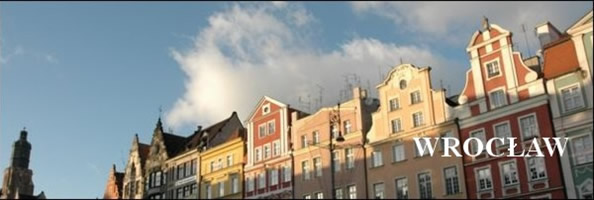
Wroclaw, located in south-western Poland is the cultural, economic and scientific center of Lower Silesia. The uniqueness of the city is determined by its early medieval origin and rich cultural texture. In its history Wroclaw was possessed and governed by Czechs, Poles, Austrians, Prussians and Germans. Although the first traces of settlements around Wroclaw are dated back to 800 B.C., the city took its shape with establishment of bishopric in the year 1000. The later development was regulated by the location laws issued in Wroclaw in 1242.
Wroclaw Jewish community is one of the oldest on the nowadays Polish territory. Its beginnings are rooted in XII century when Wroclaw was an important trade city, located on the Amber Track and soon developing free trade agreements with Prague, Venice and Karyntia. The life of first Jewish community was focusing around Jewish Street (nowadays Uniwersytecka) where the first synagogue and Jewish school was built.
XV centaury in Europe brought the raise of influence of Catholic Church with its anti-Semitic teachings. In 1455 the Czech king Ladislav, stimulated with fierce anti-Jewish sermons of J.Kapistran, granted Wroclaw the rights privilegia de non tolerandis Judaeis which were in force for the next 200 years. Jews who were involved in wholesale trade were allowed in the town only during fairs. In order to enter the town they had to be marked with yellow patch on their clothing.
The gradual reconstruction of the Jewish community was started in XVII century with Zachary Lazarus from Nahod, who became leaseholder of the Wroclaw mint. In the second half of XVIII century Haskalah reached the city. The movement had many followers among well educated Wroclaw Jews, this promoted also their assimilation with German population. Wilhelm School established in late XVIII century was the first progressive educational institution for Jewish boys. From this moment there was clear division in Wroclaw Jewish community for those following progressive teachings led by Rabbi Abraham Geiger and those following Orthodox faction lead by Rabbi Gedalje Tiktin. As a consequence, two parallel rabbinical offices operated in Wroclaw until the Second World War. In 1812 the equal rights for all the city inhabitants were introduced which perpetuated the growth of Jewish community. In 1829 the White Stork Synagogue was built (Zum Weissen Storch) and in 1872 The New Synagogue (Neue Synagoge). The next great achievement was Jewish Theological Seminary. In 1871 Wroclaw could boast to have the third biggest Jewish community in Germany after Berlin and Frankfurt. Mid XIX century also brought the publication of novel Soll und Haben (Debit and Credit) by Gustav Freytag. It depicted Wroclaw as a place infiltrated by Ostjuden who brought with them dishonesty and deception. Between 1855 and 1922 this book was reprinted 113 times. European anti-Semitism was in raise again.
Late XIX and beginning of XX centaury brought the sudden influx of impoverished Jewish masses from the East. The Wroclaw Jews were engaged strongly in the protection of the German character of the existing community.
In the inter war period, the largest problem was the raising Nazism and anti-Semitism. In the election for Reichstag in November 1932 Nazi Party won support of 40% of all votes from Wroclaw and Lower Silesia. In April 1933 the day of boycott was organized. Jewish shops and property were marked. The implementation of the Nuremberg laws in September 1935 meant that Jews became total outcasts of society. In November 1935 Jews were deprived of German citizenship and in 1938 were forbidden to drive and required to return their licenses. 91 Jews were killed on the streets, property and shops were destroyed during the Crystal Night (Kristallnacht) in November 1938. In that time the largest synagogue, The New Synagogue was set on fire and totally destroyed. During the Holocaust in Wroclaw between 1941 and 1945 the extermination of almost 8000 people was carried out. They were deported to nearby Gross-Rosen Camp or later to Kowno, Terezin and Auschwitz.
Interesting chapter of Jewish history was opened in Wroclaw after WW II. Wroclaw was Polish again. The city became a place of settlement and transit for masses of Jews from the Soviet Union and remnants of Polish Jews. Altogether it is calculated that city accepted around 70.000 Jewish immigrants. Just after WW II there were four synagogues, kosher canteen, mikvah, Talmud-Torah school, printing houses and two cemeteries. This community was gradually shrinking in size as the Communist authorities started their anti minorities politics with the support of some part of the Polish society. The remnants of Wroclaw Jews were forced out of Poland in 1968. Since 1990 there has been a gradual process of re-building of Jewish community life in Wroclaw around The White Stork Synagogue.
Places of interest in Wroclaw:
The White Stork Synagogue
Old Jewish Cemetery
New Jewish Cemetery
Places worth visiting around Wroclaw:
Bierutow - synagogue, two Jewish cemeteries
Brzeg Dolny - synagogue and Jewish cemetery
Dzierzoniow - synagogue and Jewish cemetery
Klodzko - Jewish cemetery
Legnica - Jewish cemetery
Milocice - Jewish cemetery
Olawa - Jewish cemetery
Olesnica - synagogue
Strzegom - synagogue and Jewish cemetery, close to the former Gross-Rosen Concentration Camp
Swidnica - Jewish cemetery
Ziembice - synagogue and Jewish cemetery
WIELICZKA SALT MINE
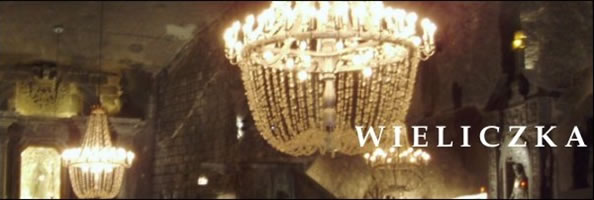
If you look at the list of most often visited Polish sites, you will certainly find Wieliczka on the leading position. The argument that it is inscribed in the UNESCO's First World List of Cultural and Natural Heritage seems to be very convincing to most people. And indeed the Salt Mine has something to boast about. It is the oldest Salt Mine in Europe, which was active up until 1997. It is hidden below the town, situated on 9 levels, reaching 327 m deep with 300 km of galleries and 3000 salt chambers. The Salt Mine has magnificent chapels (with a pearl in the form of breathtaking Chapel of St. Kinga), captivating underground lakes, original tools and equipment. Visiting the 20 historic chambers, available for tourists, connected by 2 kilometers of passages lasts approximately 2 hours, 15 minutes.
Temperature in the Mine is around 14 C (57 F) so remember to take a jacket with you, when going down. Also mind that in the beginning you need to walk 378 steps down to start the tour. Fortunately on the way back, you will take an elevator.
WARSAW / WARSZAWA
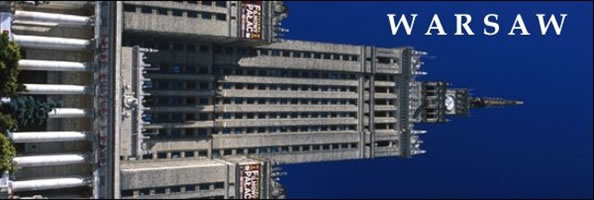
This biggest Polish city and country capital offers an harmonious symbiosis of its glorious past and fast progressing modernity. Jerusalem Avenue in the very city center reminds us about rich Jewish existence on those territories. The first traces of Jewish settlement are found already in XV century. From 1483 Warsaw was closed to Jews by issuing “privilegiade non tolerandis Judaeis”- not tolerating the Jews. Of course as in other cases this didn’t prevent Jews from coming and settling in nearby villages and attending fairs in Warsaw center. One of those settlements was even called “New Jerusalem”. From the beginning of XIX century Austrian administration allowed Jews to settle in town and first institutions and synagogues were constructed. Haskalah movement brought by immigrating German Jews was prevailing and in 1826 the School of Rabbis was opened. Austrians in they drive to control and administer everything gave an order to introduce surnames for all Jewish population. Within 1804-1807 a romantic writer Theodor Hoffmann was given the task to invent them. In this way we can enjoy today such surnames as Vogelsang, Rosenblat , Rosenthal or Kronenberg.
Rabbi Dov Ber Meisels was one of the key Jewish political leaders. He was a strong supporter of the independence uprisings in 1830, 1846 and 1963. He awaked patriotism in the Jews and was engaged in fighting for equality in their social status. There were several Orthodox synagogues, including Nozyk Synagogue used by community to this very day and “round synagogue” erected in Praga and destroyed by the Nazis. The most outstanding was the building of Great Synagogue, belonging to the progressive Jews. This synagogue was blown up by the Nazis in May 1943 at the end of Ghetto Uprising. More than three hundred houses of prayer and shtiblech were in operation at the beginning of XX century, serving the needs of 213.000 Jews in this fast growing community. In 1916 Jews were making 44% of general population of Warsaw. They made their living mainly from handcrafts, commerce and transport services.
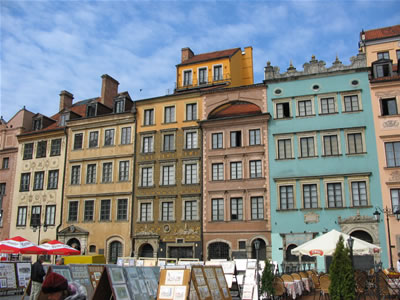
During the two decades of the inter war period, majority of the Jews lived in the north-west part of the city between Okopowa Street and Krasinski Park. At the outbreak of the Second World War, Warsaw was inhabited by 380.567 Jews. In September 1940 Germans established the Warsaw Ghetto. Within the next two years approximately 450.000 people had passed through it. Between 1940 and 1942, 100.000 people died of starvation and illness in the Warsaw Ghetto. From July to September 1942, about 300.000 Jews were transported to the German Nazi death camp in Treblinka, all passing through Umschlagplatz, freight rail station area in northern part of the city.
In spring 1943 the last remaining Jews of Warsaw were fighting the Ghetto Uprising after which the Germans completely torn down the ghetto area buildings
In late 1944, after Warsaw Uprising, Germans decided to punish this city, implementing its total annihilation. About 84% of buildings were destroyed, Warsaw was never to raise again.
Nowadays visiting Warsaw you need to look for traces of its pre war history, scattered all over this modern city. Often they are hidden in shade of communist or modern architecture. Nozyk Synagogue, buildings of the Jewish community and Jewish theater all on Twarda Street and Grzybowski Square, are now the center of Jewish life in this city. Within few hours driving and walking, you can visit the most important places connected with Warsaw’s Jewish past. Jewish cemetery, Nozyk Synagogue, Heroes of the Ghetto monument, Umschlagplatz, Mila 18 are only few of many other places worth seeing during your visit.
Apart from Jewish interest places, Warsaw has much more to offer. Old City, Royal Castle, Wilanow Palace, Lazienki Park, Palace of Science and Culture, Warsaw Uprising Museum, are only mere representation of the city tourist potential.
Jewish places worth visiting around Warsaw:
Gora Kalwaria - two synagogues and Jewish cemetery, Gerer Hasidim
Grodzisk Mazowiecki - well preserved Jewish cemetery
Grojec - synagogue and Jewish cemetery
Kaluszyn - Jewish cemetery
Kozienice - Jewish cemetery
Makow Mazowiecki - synagogue and Jewish cemetery
Minsk Mazowiecki - Jewish cemetery
Mszczonow - Jewish cemetery
Nowy Dwor - well preserved Jewish cemetery
Otwock - synagogue and Jewish cemetery
Piaseczno - Jewish cemetery
Pruszkow - Jewish cemetery
Pultusk - Jewish cemetery
Radzymin - Jewish cemetery
Sochaczew - Jewish cemetery
Wyszkow - Jewish cemetery
Zyrardow - Jewish cemetery
TREBLINKA
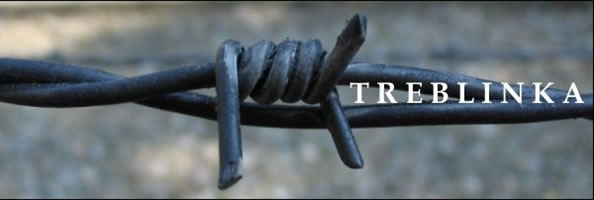
One of the system of German Nazi death camps localized on the German occupied Polish territory. Treblinka, Belzec, Chelmno, Sobibor and Majdanek were designed to mass exterminate 3,3 million of Polish Jews under the cryptonym "Aktion Reinhard".
The death camp in Treblinka was located in the northeastern region of the Generalgouvernement District. The camp was erected in a sparsely populated area near Malkinia Gorna, a junction on the Warsaw - Bialystok railway line, 4 km northwest of Treblinka village.
Construction was started in spring 1942 and the camp was ready to receive transports in June 22nd, 1942. SS-Obersturmführer Irmfried Ebert, an expert in euthanasia killing centre in Germany became the camp first commandant. Since August 1942 the command was taken by SS-Obersturmführer Franz Stangl, the former commander of the Sobibor death camp. Treblinka was run with the use of approximately 30 German SS-men and 120 assisting Ukrainian guards. In late 1942 Stangl ordered construction of fake rail station with ticket counters, clock and direction indicators, all this was situated close to the unloading platform. The purpose of this was to lull the arriving victims into believing that they had actually arrived at a transit camp. One of the main objectives of the camp command was to shorten the time needed to murder one arriving transport, in this way they could reach higher numbers of victims. In the initial phase, a section of twenty wagons containing 2,000-3,000 people could be liquidated within 3-4 hours. Later the Germans "gained experience" and reduced the duration of the killing process to an hour and a half.
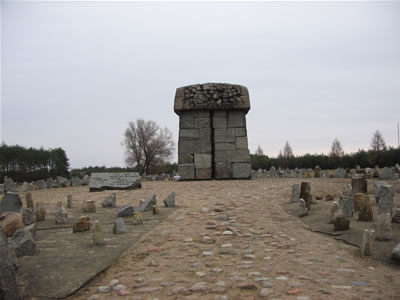
The Lazarett with red cross flag on the top was a barrack close to the unloading platform. In this place children, elderly or injured people were shot and burned in order not to slow down all the process of extermination in gas chambers.
In the reception area people were ordered to be undressed and leave all their belongings. Later they were run through narrow corridor made of two lines of barbed wire camouflaged with branches of trees, the so called “Tube”. Gas chambers were attached to motor producing exhaust fumes with lethal carbon monoxide. Close to the gas chambers were huge ditches for burying the corpses. From winter 1942/43 corpses were cremated by the Sonderkommando prisoners, instead of being buried. On this stage the elimination of material proof of crime was initiated.
Treblinka operated from June 1942 to August 1943 within this time 738.000 Jews from Generalgouvernement and 107.000 Jews from Bialystok district were murdered. Jews from outside Poland were also victims of Treblinka they were transported from Slovakia (7000), Terezin (8000), Greece (6800), Macedonia (7000).
On the 2nd of August 1943 a revolt was organized by 1000 prisoners kept on the site to operate the camp system. About 200 people managed to escape.
When Treblinka was liquidated in 1943, the camp area was ploughed over and trees were planted. The former camp area was turned into a farm for Ukrainian family who were to protect this place and give it a proper alibi.
Nowadays there is an impressive monument raised in the middle of Treblinka forest. One of its parts are 17.000 irregular granite stones out of which 216 have the names of different Jewish communities engraved.



